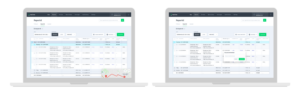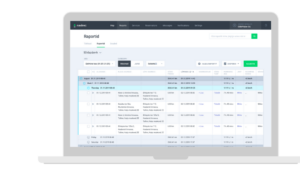GPS driving logbook

Automatic GPS driving logbook will make your life easier and help the company save significant amounts
Advantages of the GPS driving logbook

- eliminates the need to recall trips of the last month
- all trips are registered automatically in a report
- includes all the records required for the Estonian Tax and Customs Board (ETCB) as proof of work trips
- includes information on fuel consumption
- approved by ETCB
How does the Navirec GPS driving log book work?

A GPS tracking device is installed in the vehicle, helping to track the location and movement of the vehicle both in real-time and retrospectively.
Navirec driving log book contains all the necessary information about the vehicle, start and end time of the trip, route, driving distance, purpose of the trip, and information about the driver and the trip can be immediately reproduced on a map.
Keeping a driving logbook is mandatory in order to apply for a compensation exempt from tax
The driving logbook must contain:
 details of the person using the passenger vehicle
details of the person using the passenger vehicle- details of the registration plate of the passenger vehicle
- odometer reading at the start and end of each work trip
- date and purpose of each trip
All these details are automatically stated in Navirec GPS driving logbook, which is suitable for presenting to ETCB

The procedure of taxation of
company vehicles
From January 1, 2008, the fixed-rate fringe benefit of 256 euros per month was substituted with a rate that is based on the capacity of the passenger vehicle motor (with price per kW).
What exactly changed?
- fringe benefit rate of a new passenger car is 1.96 euros/kW per month
- with passenger cars over 5 years old 1.47 euros/kW per month
- with hybrid passenger cars, it is based on the maximum capacity (kW) of the internal combustion engine as stated in the traffic register of Road Administration or in the technical passport
- with electric and gas vehicles, it is also based on the capacity (kW) of the motor as stated in the traffic register of Road Administration or in the technical passport
- currently, the fringe benefit rate applicable to vans (N1 category vehicle), which the employer allows to use for private trips, can also be calculated on the basis of kW
Taxation of company cars
The taxation procedure applies to vehicles used for both work and private trips.
Fringe benefits tax is not paid if 100% of the trips with the vehicle are work-related!
The best way to prove the purpose of a trip is to use the electronic Navirec GPS driving logbook
How is the fringe benefits tax calculated?
The fringe benefits tax of a new car is calculated, multiplying the capacity of the vehicle (kW) with 1.96 euros, adding to it the income tax of special occasions and social tax of fringe benefit.
 For example, in case of a 2018 Toyota Avensis:
For example, in case of a 2018 Toyota Avensis:
108 kW x 1.96 eur = 211.68 eur
211.68 eur x 0.25 = 52.92 eur
(211.68 eur + 52.92 eur) x 0.33 = 87.32 eur
Taxes in total:
52.92 + 87.32 = 140.24 eur per month
(16 828 eur per year)
How much would your company save in a year, if you used the GPS driving logbook?
Compensation for a private car

Work trips made by a private car are compensated by up to 0.3 €/km, but not more than 335 euros per calendar month.
The compensation can be paid for vehicles, when the employee, not the employer, owns the vehicle or has the right to use the vehicle.
Make vehicle-related reporting more convenient and save on costs with the Navirec GPS driving logbook
